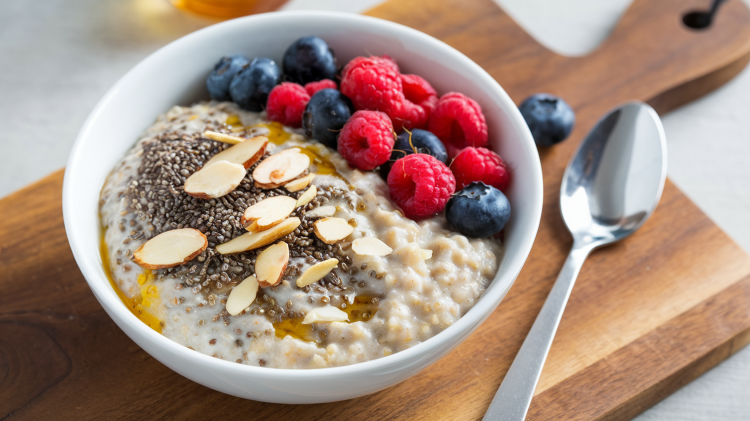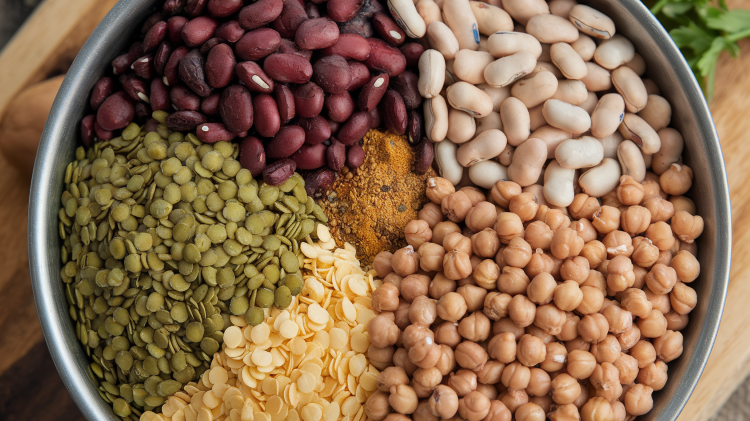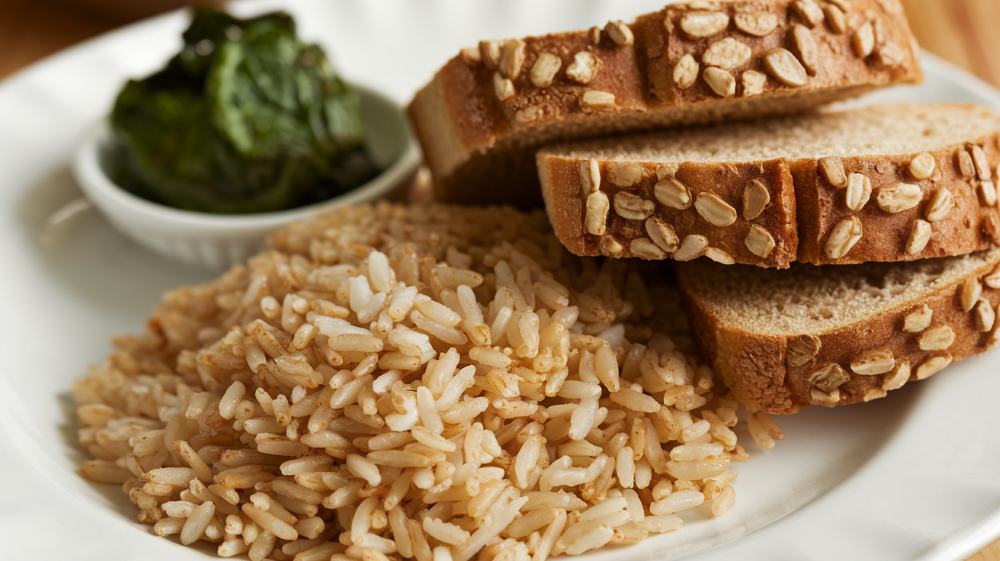Fiber is an essential part of a healthy diet. It helps keep our digestive system running smoothly and offers many other health benefits.
But how much fiber should we aim for each day?

Adults need between 22 to 34 grams of fiber per day, depending on age and sex. This amount helps maintain good health and prevents various diseases.
Getting enough fiber can lower cholesterol, control blood sugar levels, and promote regular bowel movements.
Reaching the daily fiber goal may seem tough, but it's doable with the right food choices. Whole grains, fruits, vegetables, and legumes are all great sources of dietary fiber.
By including these foods in meals and snacks, people can easily meet their fiber needs and enjoy the many health benefits that come with a high-fiber diet.
Amazon Affiliate Disclaimer
We participate in the Amazon Services LLC Associates Program, an affiliate marketing program that allows us to earn fees by linking to Amazon.com and its affiliated sites. If you click on an Amazon affiliate link on our site and make a purchase, we may receive a small commission at no additional cost to you.
Understanding Dietary Fiber
Dietary fiber is a crucial part of a healthy diet. It helps with digestion and offers many health benefits.
There are different types of fiber, and they come from various food sources.
Types of Fiber: Soluble and Insoluble
Fiber comes in two main forms: soluble and insoluble.
Soluble fiber dissolves in water and forms a gel-like substance. It can help lower cholesterol and control blood sugar levels. Foods high in soluble fiber include oatmeal, chia seeds, and beans.
Insoluble fiber doesn't dissolve in water. It adds bulk to stool and helps food move through the digestive system. Whole grains, vegetables, and nuts are good sources of insoluble fiber.
Both types of fiber are important for health. Eating a mix of soluble and insoluble fiber is best for overall digestive health.
Sources of Fiber: Whole Foods
Whole foods are the best sources of dietary fiber. Fruits, vegetables, whole grains, beans, and legumes are all fiber-rich options.
Whole grains like brown rice and quinoa provide both types of fiber. They can easily replace refined grains in meals.
Fruits and vegetables are also excellent fiber sources. Berries, apples, and leafy greens are particularly high in fiber.
Beans and legumes are fiber powerhouses. They're also rich in protein and other nutrients. Adding them to soups, salads, or as side dishes can boost fiber intake.
Seeds like chia and ground flaxseed are easy to add to meals. They pack a lot of fiber in a small amount.
Sprinkling them on yogurt or adding them to smoothies is a simple way to increase fiber intake.
Health Benefits of Fiber
Fiber is a powerful nutrient that offers numerous health advantages. It supports digestive function, helps prevent chronic diseases, and plays a key role in regulating important bodily processes.
Digestive System and Bowel Health
Fiber is crucial for a healthy digestive system. It adds bulk to stool, making it easier to pass through the gastrointestinal tract. This helps prevent constipation and promotes regular bowel movements.
Fiber also feeds beneficial gut bacteria, supporting a healthy microbiome. This can improve overall digestive health and immune function.
For those with diverticular disease, a high-fiber diet may help manage symptoms and prevent complications. Fiber softens stool and reduces pressure in the colon, which can ease discomfort.
Prevention of Chronic Diseases
A diet rich in fiber is linked to a lower risk of several chronic diseases. Cardiovascular disease risk decreases with higher fiber intake.
Fiber helps lower cholesterol levels, particularly low-density lipoprotein (LDL) or "bad" cholesterol.
Fiber may also reduce the risk of certain cancers, especially colorectal cancer. It helps move potential carcinogens through the digestive system more quickly, limiting their contact with the colon.
Studies suggest that high-fiber diets may lower the risk of stroke. The exact mechanism is not fully understood, but it's likely related to fiber's effects on blood pressure and cholesterol.
Regulating Blood Sugar and Cholesterol
Fiber plays a vital role in managing blood sugar levels. It slows down the absorption of sugar, which can help prevent spikes in blood glucose. This is particularly beneficial for people with or at risk of type 2 diabetes.
Soluble fiber forms a gel-like substance in the digestive tract. This substance can bind to cholesterol particles and remove them from the body.
As a result, fiber can lower LDL cholesterol levels.
By regulating blood sugar and cholesterol, fiber contributes to overall heart health. It helps maintain healthy blood pressure and reduces the risk of heart disease.
Dietary Guidelines for Fiber Intake
Getting enough fiber is key for good health. The right amount helps digestion and prevents disease. Let's look at how much fiber you need and how to add it to meals.
Daily Fiber Intake Recommendations
Experts recommend different fiber amounts based on age and sex.
Adults should aim for 14 grams of fiber for every 1,000 calories eaten. For a 2,000 calorie diet, that's 28 grams per day.
Men under 50 need 38 grams daily. Women under 50 need 25 grams. After 50, men should get 30 grams and women 21 grams.
Kids have their own targets. Toddlers aged 1-3 need about 19 grams daily. Fiber needs increase with age.
Fiber-Rich Meal Planning
Planning high-fiber meals is simple. Start with whole grains like brown rice or whole wheat bread. Add fruits and veggies to every meal.
Beans, peas, and lentils pack a fiber punch. Sprinkle nuts and seeds on salads or yogurt. Choose whole fruits over juice.
Snack on raw veggies with hummus. Pick cereals with at least 5 grams of fiber per serving. Read food labels to find high-fiber options.
Aim to include a variety of fiber-rich foods throughout the day. This helps meet your daily goal and provides other important nutrients.
Enhancing Fiber Intake
Boosting your fiber intake can be done through diet changes and supplements. These methods help you reach your daily fiber goals and improve your health.
Incorporating High-Fiber Foods into Your Diet
Beans, lentils, and chickpeas are excellent sources of fiber. Add them to salads or soups for extra nutrition and texture. Whole grains are also key. Choose bread with at least 2 grams of fiber per serving.
Fruits and vegetables are fiber-rich options. Apples, pears, and berries are good choices. Leafy greens, broccoli, and carrots also pack a fiber punch.
Try these tips:
- Swap white rice for brown rice or quinoa
- Snack on nuts and seeds
- Add chia seeds to smoothies or yogurt
- Choose whole-grain pasta over regular pasta
Using Fiber Supplements Wisely
Fiber supplements can help bridge the gap when diet alone isn't enough. Common types include psyllium, methylcellulose, and inulin.
It's important to start slow with supplements. Begin with a small dose and increase gradually. This helps avoid digestive discomfort.
Drink plenty of water with fiber supplements. This prevents constipation and helps the fiber work effectively.
Remember, supplements shouldn't replace a high-fiber diet. They work best when combined with fiber-rich foods. Always check with a doctor before starting any new supplement regimen.
Impact on Overall Health and Lifestyle

Fiber plays a crucial role in maintaining good health and supporting a balanced lifestyle. It affects multiple aspects of our well-being, from weight management to digestive health.
Fiber's Role in Weight Management
Fiber helps control weight by making you feel full longer. High-fiber foods take more time to chew, slowing down eating. They also keep you satisfied, reducing snacking between meals.
Fiber-rich foods are often lower in calories. This can help with calorie control without feeling deprived. Foods like fruits, vegetables, and whole grains are good choices.
Fiber also slows down digestion. This leads to a more steady release of nutrients. It helps avoid sudden spikes in blood sugar levels. This can be helpful for managing diabetes and overall health.
Gut Health and Microbiome
Fiber is essential for a healthy gut. It feeds the good bacteria in your digestive system.
These bacteria help break down food and produce important nutrients.
A high-fiber diet supports a diverse gut microbiome. This can improve digestion and boost immune function.
It may also help reduce inflammation in the body.
Fiber adds bulk to stool, making it easier to pass. This can prevent constipation and promote regular bowel movements.
It may also lower the risk of digestive issues like hemorrhoids.
Some types of fiber can help lower cholesterol levels. This is good for heart health.
The Mayo Clinic recommends choosing high-fiber foods to support overall health.
Conclusion
In conclusion, achieving the recommended daily fiber intake is a cornerstone of maintaining optimal digestive health and overall well-being. Fiber not only supports regular bowel movements and a healthy gut microbiome but also plays a vital role in preventing chronic diseases such as heart disease, type 2 diabetes, and certain cancers. By incorporating a variety of fiber-rich foods like whole grains, fruits, vegetables, legumes, nuts, and seeds into your meals and snacks, you can easily meet your daily fiber goals while enjoying diverse flavors and nutritional benefits.
Both soluble and insoluble fibers are essential for a balanced diet, as they contribute to cholesterol management, blood sugar regulation, and improved digestion. Planning high-fiber meals, choosing whole foods over processed options, and making simple swaps—like replacing white rice with brown rice or adding chia seeds to smoothies—can make a significant difference in your fiber intake. While supplements can be helpful for bridging gaps, they should complement rather than replace dietary sources.
Ultimately, prioritizing fiber in your diet empowers you to enhance your digestive health, support a balanced lifestyle, and reduce the risk of chronic health conditions.


